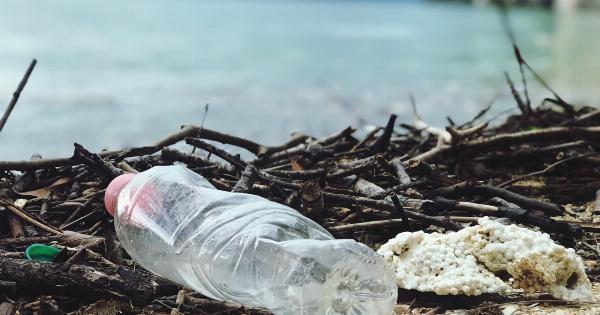Our modern world is filled with numerous toxins that surround us in our daily lives. These toxins can be found in the air we breathe, the water we drink, the food we eat, and the products we use.
They can have a profound impact on our health and well-being, yet many of us are unaware of their presence and the potential dangers they pose. In this article, we will explore some of the most common toxins we encounter in everyday life and what scientists have to say about their effects on our health.
Air Pollution: A Silent Killer
One of the biggest sources of toxins that we encounter every day is air pollution. Whether it is generated from vehicle emissions, industrial activities, or even household products, the air we breathe is often filled with harmful pollutants.
These pollutants can include carbon monoxide, sulfur dioxide, nitrogen oxides, and particulate matter. According to scientific studies, long-term exposure to air pollution has been linked to a wide range of health problems, including respiratory diseases, heart diseases, and even cancer.
The Chemicals in Our Food
Our food is another potential source of toxins that we consume on a daily basis. From pesticides and herbicides used in agricultural practices to food additives and preservatives, the chemicals in our food can have detrimental effects on our health.
For instance, some pesticides have been associated with neurological disorders, hormonal imbalances, and reproductive issues. Scientists have also raised concerns about the long-term effects of consuming genetically modified organisms (GMOs), which have become increasingly prevalent in our food supply.
Water Contamination: The Hidden Threat
Water is essential for our survival, yet it can also be a carrier of harmful toxins.
Industrial pollution, agricultural runoff, and inadequate water treatment can lead to contamination with heavy metals, pesticides, pharmaceuticals, and other pollutants. Ingesting contaminated water can lead to a range of health problems, including gastrointestinal issues, liver damage, and even neurological disorders. Scientists emphasize the importance of clean and safe drinking water for maintaining optimal health.
Endocrine Disruptors: Messing with Our Hormones
Endocrine disruptors are chemicals that can interfere with our hormonal system. They are commonly found in everyday products such as plastics, personal care products, and cleaning agents.
These chemicals have been linked to various health concerns, including reproductive disorders, developmental issues, and certain types of cancers. Scientists warn about the potential dangers of prolonged exposure to endocrine disruptors, especially during critical periods of development such as pregnancy and childhood.
Heavy Metals: A Heavy Burden on Health
Heavy metals, including lead, mercury, cadmium, and arsenic, are persistent toxins that can accumulate in our bodies over time. They can be found in contaminated soil, water, and even certain consumer products like cosmetics and batteries.
Prolonged exposure to heavy metals can lead to serious health problems, including damage to the central nervous system, kidney dysfunction, and impaired cognitive development. Scientists emphasize the importance of minimizing exposure to heavy metals, especially for vulnerable populations such as children.
The Household Hazards
Many household products that we use on a daily basis can harbor hidden toxins. Cleaning agents, for example, often contain harsh chemicals that can irritate our skin, eyes, and airways.
Some common household items, such as furniture, carpets, and paint, may release volatile organic compounds (VOCs), which can cause respiratory problems and allergic reactions. Additionally, certain personal care products, like cosmetics and skincare items, can contain harmful ingredients that can be absorbed by the body. Scientists advise cautious use of such products and opting for safer alternatives whenever possible.
Plastic Pollution: Beyond Convenience
The convenience of plastic products comes at a heavy cost to both our health and the environment. Plastic pollution has become a global crisis, with plastic waste contaminating our oceans, wildlife, and even entering our food chain.
Plastics contain harmful chemicals, such as phthalates and bisphenols, which can leach into the environment and find their way into our bodies. Scientists have linked these chemicals to a range of health issues, including hormonal disruptions, reproductive problems, and certain cancers.
Electromagnetic Fields: Invisible Threats
In our technology-driven world, we are constantly surrounded by electromagnetic fields (EMFs) generated by electrical appliances, wireless devices, and power lines.
While the long-term effects of EMF exposure are still being debated, some scientists have expressed concerns about potential health risks. Some studies suggest a possible link between EMF exposure and increased risk of certain cancers, neurological disorders, and fertility problems. More research is needed to fully understand the impact of EMFs on our health.
Preserving Your Health
Given the ubiquity of toxins in our everyday lives, it is crucial to take steps to minimize our exposure and protect our health. Here are some recommendations based on the advice of scientists:.
- Avoid smoking and second-hand smoke, as it is a major source of air pollution.
- Invest in a high-quality air purifier to improve indoor air quality.
- Choose organic foods whenever possible to reduce exposure to pesticides and GMOs.
- Filter tap water or consider using a trusted source of clean water.
- Minimize the use of plastic products and opt for safer alternatives, such as glass or stainless steel.
- Read labels carefully and avoid personal care products and cleaning agents with harmful ingredients.
- Ensure proper ventilation in your home to reduce exposure to indoor air pollutants.
- Limit the use of electronic devices and practice safe habits when it comes to their usage.
- Dispose of hazardous household waste responsibly and in accordance with local regulations.
- Stay informed and educate yourself about potential toxins in your environment to make informed choices.
In Conclusion
The presence of toxins in our everyday lives poses potential risks to our health and well-being. Understanding the dangers associated with these toxins is crucial for making informed decisions to minimize our exposure.
By following the recommendations of scientists and adopting healthier habits, we can take steps to safeguard ourselves and future generations from the harmful effects of toxins in our environment.






























